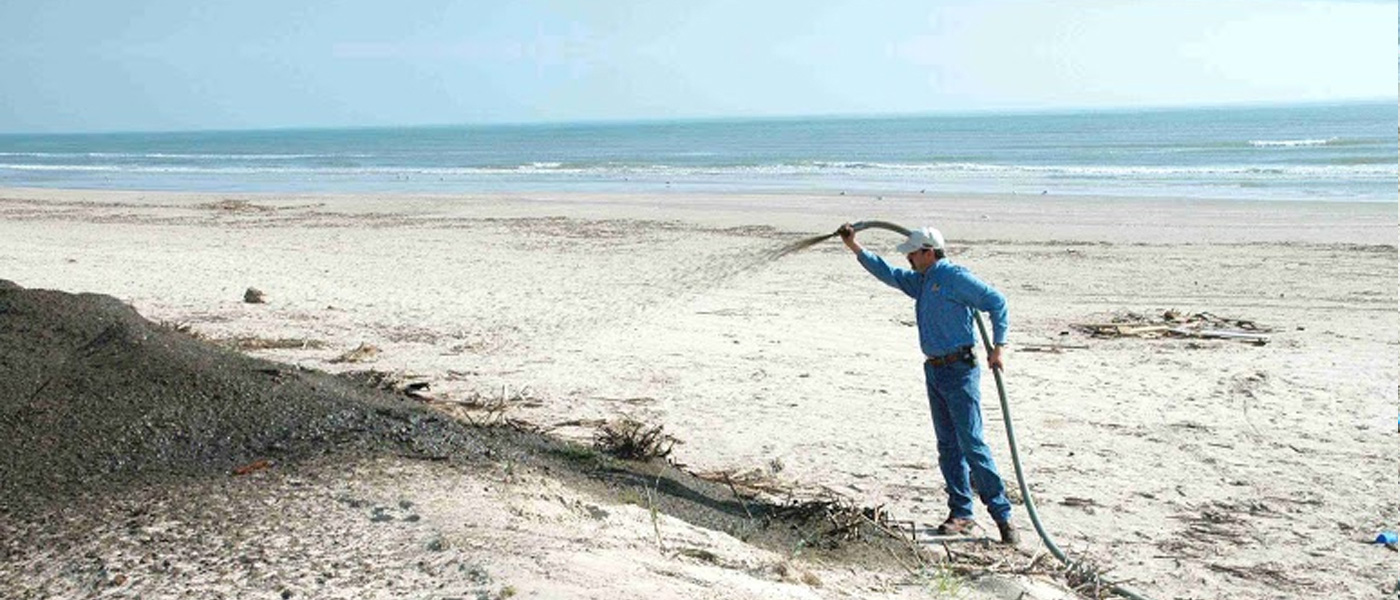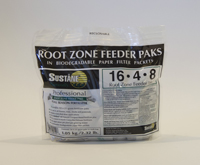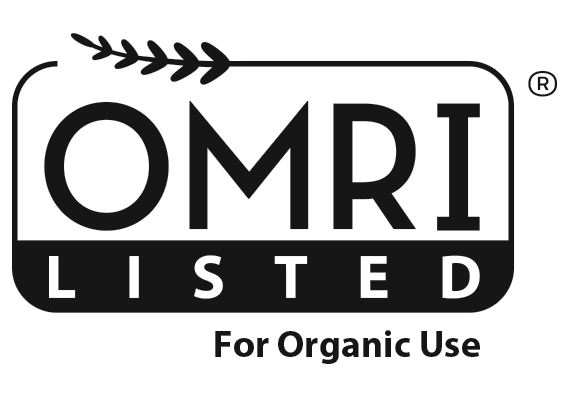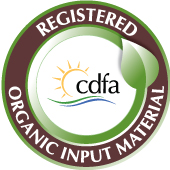Erosion Control
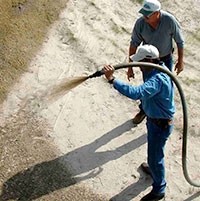
As world demand for restoration of disturbed soil sites and the development of natural recreational areas increases, architects, planners and regulatory authorities look for design, inputs and management practices that will produce the best possible product with the lowest environmental impact.
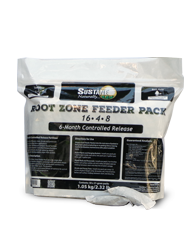
- Product Page Grid Blurb: Provides a single dose of Suståne and Controlled Release Fertilizer in a biodegradable paper filter pack.
Suståne® 16-4-8 Root Zone Feeder Pack
Slow Release Fertilizer a in Biodegradable Filter Pack
180 - 250 Day Nutrient Release at 70º F
Description:
Suståne 16-4-8 Root Zone Feeder Paks provide single dose applications of Suståne organic and controlled release fertilizers designed to provide long-lasting plant nutrition in a completely biodegradable paper filter pack. This product is designed to provide a continuous release of nutrients for up to 8 months at 70º F (23º C) soil temperature.
Recommended Use:
Suståne 16-4-8 Root Zone Feeder Pack is designed for use in all flowers, trees, shrubs and perennial plantings including landscape areas, potted plants and hanging baskets.
Features of Suståne 16•4•8 Root Zone Feeder Packs:
- Assures controlled dose appliacitons
- Suståne Organic+CRF produce predictable results, dependable performance and high quality plants.
- 50% Suståne All Natural Compost Based Fertilizer
- 50% coated 6-month Controlled Release Fertilizer
- One application per plant per growing season.
- Low burn potential, nutrients release gradually over time.
- In permeable biodegradable paper filter packets.
- No measuring, no special equipment, no waste.
Benefits of Suståne 16•4•8 Root Zone Feeder Packs
- Rich in humic acids
- Increases the nutrient and water holding capacity of the soil
- Strengthens plants tolerance against hot dry conditions
- Promotes greater root development
- Improves buffering against changes in soil pH
- Increases the soil’s ability to suppress plant pathogens
- Increases soil porosity and stability for greater root development and water holding capacity
Always Safe for Plants, People and the Environment
- Manufactured by Suståne in the USA at an EPA permitted facility.
- Pathogen and weed free, no blood or bone products. Allowed for export to over 60 countries world wide.
- Aerobic composting eliminates animal and rodent attraction to application site.
- Contains naturally occurring beneficial bacteria and fungi that are necessary to begin nutrient life cycle in poor soil.
- Suståne is fully composted eliminating the need for sterilization, permitting a healthy environment for beneficial microbial populations.
Suståne® Enhanced with SumicoatTMControlled Release Fertilizer
SumicoatTM Controlled Release Fertilizers are polymer-coated controlled release fertilizers initially tested and developed for the rice production markets in several different climates in Japan. Sumicoat products have been used for years to release precisely the right amount of fertilizer to optimize plant growth. For the past several years Suståne has been evaluating different Sumicoat release products blended with Suståne organics to create the optimal nursery and greenhouse fertilizer combinations. Suståne and Sumicoat have been proven through years of research to provide the winning combination that will not under or over release.
Guaranteed Analysis
- Total Nitrogen (N) ..............................16%
- 0.2% Ammoniacal Nitrogen
- 1.8% Nitrate Nitrogen*
- 2.6% Water Insoluble Nitrogen**
- 11.0% Urea Nitrogen*
- 0.4% Other Water Soluble Nitrogen
- Available Phosphate (P2O5) ....................4%
- Soluble Potash (K2O)...........................8%
- Calcium (Ca)..................................2.75%
- Magnesium ..................................0.75%
- Sulfur...........................................1.00%
Total Plant Nutrition
- Iron ...............................................0.25%
- Manganese ................................ 0.05%
- Zinc............................................. 0.05%
- Humic Acid........................................5%
- Organic Matter................................45%
- pH ....................................................6.8
- Carbon:Nitrogen(C:N).......................2:1
- Bulk Density lb./cu. ft ........................42
- Salt Index (scale 1-100)......................4
- % of Total N as Slow Release.........90%
*12.7% controlled release nitrogen derived from polymer coated urea, polymer coated potassium nitrate and polymer coated monoammonium phosphate.
**2.6% slow release nitrogen derived from aerobically composted turkey litter, ureaform and feather meal.
Directions for Use: Simply insert Feeder Pak(s) into the root zone of potted or bed grown plants at planting or re-potting time or during routine fertilization maintenance after plant establishment.
Potted Plants and Hanging Baskets: Install one Suståne Feeder Pak per 1-gallon pot inside root zone; two paks per 2-gallon pot; three per 3-gallon pot.
Flower beds and Perennials: Install one Feeder Pak 2-4 in. below soil surface within 6-inch radius of plant stem or midway between stem and drip line of plant canopy.
Shrubs and Young Trees: Install one Feeder Pak per every 12 in. height of plant (2 for 24 in. ht., etc.) 4 - 6 in. below soil surface midway between stem and drip line.
Rapid Plant Establishment:
Suståne fertilizers are long lasting and are weed free to promote native plants, grasses, and forbs establishment. Minimizing soil erosion and weed growth, and the need for repairs and re-seeding and the time required to achieve soil stabilization.
In addition to carbon, oxygen, and hydrogen there are 13 other elements known to be essential for plant photosynthesis to occur. Different plants have different nutritional requirements. Nitrogen (N), phosphorous (P) and potassium (K) are the three other elements that plants require in the greatest quantity; hence they are identified as the primary nutrients. Secondary elements are often required in larger doses, and tertiary or “trace” elements also referred to, as micronutrients are required in minute or “trace” amounts by plants.

- Product Page Grid Blurb: Biologically active hydro-seeding media

Sustane FOUNDATION
Biologically active hydro-seeding media for soil building, erosion control, and revegetation applications.
| Label | Spec Sheet |
Recommended Use
For use in DOT roadside establishment, erosion control projects, mine site reclamation, burn area reestablishment, and dune restorations.
Description
Easy-to-apply seedbed amendment for rapid seed germination and vegetative establishment. FOUNDATION soil building media stays where it's applied, is rich in organic carbon, vital plant nutrients, and microbiology to replenish depleted soils.
FOUNDATION's unique blend of best-in-class ingredients for reclaiming depleted soils includes wild rice hulls, sphagnum peat, coconut coir, biochar, aerobic compost, plant-based tackifier, amino acids, and Suståne's proprietary blend of four Endomycorrhizae species.
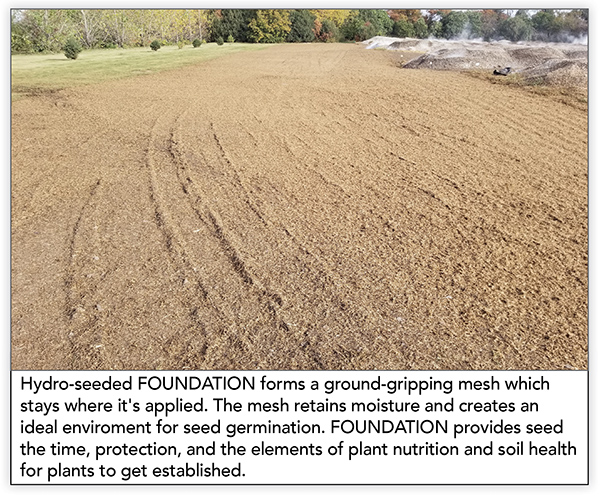
Benefits of Suståne FOUNDATION
- Easy application - mixes easily with water and seed, and runs smoothly in hydraulic seeder systems
- Wild rice hulls, peat, coir, and tackifier bond FOUNDATION and seed application in place
- Improves soil structure and porosity, creating ideal seed germination and rooting environment
- Contains 4 species of endomycorrhizal fungi for enhanced water and nutrient uptake by plants
- Aerobic compost provides soil beneficial microorganisms for improved nutrient cycling and ongoing plant growth
- Rich in organic carbon for depleted soils
- Contains biochar to promote biological activity and improve soil quality
- Contains 1600% vegetative mass, 4 times more than required for more enduring benefits
- Manufactured by Suståne in the USA at an EPA-permitted facility.
- Available in 50 lb bales
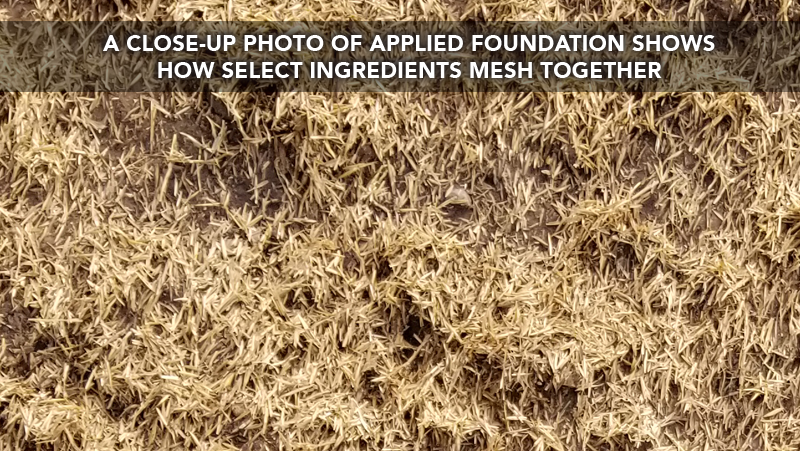
Land Management, Native Restoration & Erosion Control Programs:
Suståne fertilizer application rates for use with FOUNDATION - Adjust based on soil tests and project specifications.
Suståne Organic Concentrated Compost 2-3-3:
Application rates vary between 1-3 tons per acre. Mix with water solution at a ratio of 2 lb. Suståne Concentrated Compost to 1 gallon of water 1 ton per 1,000-gallon tank.
Suståne 4-6-4 All Natural Organic:
- For 44 lb. of N per acre apply 1100 lb.
- For 88 lb. of N per acre apply 2200 lb.
Suståne 5-2-4 All Natural Organic:
- For 44 lb. of N per acre apply 880 lb.
- For 90 lb. of N per acre apply 1800 lb.
- For 130 lb. of N per acre apply 2600 lb.
Suståne 8-2-4 All Natural Organic
- For 44 lb. of N per acre apply 550 lb.
- For 90 lb. of N per acre apply 1100 lb.
- For 130 lb. of N per acre apply 1700 lb.
The absence of essential nutrients is a growth-limiting factor. Soil micronutrient levels also affect soil microbiology and plant productivity. Supplying secondary and micronutrients is critical to plant health and soil productivity. Supplying small doses of secondary and tertiary nutrients (along with N, P and K) to crops and soils can provide both short and long-term benefits.
Humic Acid (H.A.)
is a component of humus, the end product of decomposition of organic materials. Humus and its constituents, humic acid, fulvic acid, and humin “have the greatest single influence on all physical. chemical, and biological aspects of our spaceship earth.” [from “Humic, Fulvic and Microbial Balance – Organic Soil Conditioning”, William R. Jackson, PhD.] H.A., which is soluble in dilute alkaline solution, and precipitated in a weak acid solution, is made of complex, long chain molecular structures comprised of carbon, hydrogen, nitrogen, oxygen and sulfur.
Organic Matter - An Important Note:
It is the quality of the organic matter present in a soil or in an organic fertilizer that is most important, not the total quantity of organic matter. Raw manures (dehydrated or not) plant materials like straw, leaf mulch or wood fiber, animal meal and plant protein based “organic” fertilizers will oftentimes test higher quantity in total organic matter than does Suståne. Suståne has undergone thorough, aerobic composting, or humification before further processing. Organic matter must first be decomposed before soil microorganisms can release plant nutrients from organic fertilizers. This process requires large quantities of oxygen. The decomposition process creates biological oxygen demand (B.O.D.). In other words, soil microorganisms and plants require – or demand, an ample supply of oxygen to support healthy plant growth. Suståne does not take oxygen from the rhizoshpere. The nutrients and humus are immediately available to soil microorganisms. Su stane does not “tie up” or immobilize soil nitrogen by causing soil microbes to first digest raw organic matter.
Always remember that rule of the jungle is that soil microbes eat first, before the plants are fed. That is their job and it is an important one. The application of raw organic material to soils establishes a competition for oxygen between plant roots and soil microbes – and the microbes always win, often at the expense of supplying nutrients or available oxygen to the plants.
Microbial Diversity:
refers to breadth or range of microorganisms present in an ecosystem. Soil microbiology is so instrumental in many soil and plant functions that its importance to healthy plant establishment, erosion control and bioremediation cannot be veremphasized. Suståne, true aerobic compost contributes so much more than plant nutrition and humus – it sets the stage for expanding microbial diversity in weathered and eroded soils. Microbiologists and ecologists refer to these positive changes as enhancing “species richness diversity” (SRD). SRD is a measurement of diversity that indicates the number of different types of microorganisms present in a sample of soil or compost.
Suståne organic fertilizers provide natural sources of humates and humic substances formed during the Suståne aerobic composting and manufacturing process. Humic acid levels range from 7 – 9% in Suståne 4-6-4 and 8-2-4. One ton of Suståne applied per acre provides approximately 160 lb. humic acid per acre and additional humic substances.

- Product Page Grid Blurb: Mycorrhizal fungi are used to treat disturbed soils that have been depleted of beneficial microorganisms.
Arbuscular Mycorrhizal Granular Inoculant from Suståne
| Label | Spec Sheet | MSDS |
Mycorrhizal fungi is used to treat disturbed soils that have been depleted of beneficial microorganisms. Mycorrhizae are major facilitators in soil microbiological processes. The addition of mycorrhizal inoculants has a positive effect on microbial populations by providing an environment for organisms that aggregate the soil, convert matter to available plant nutrients, and suppress pathogens, which are generally present in higher populations when mycorrhizae are not present and when soils are compacted and anaerobic.
Background on Mycorrhizal Fungi:
Mycorrhizal fungi are living organisms that provide several benefits for their host plant. These organisms are entirely dependent upon their symbiotic relationship with plants for survival and consequently provide a number of services and materials to assure their host plant’s survival and productivity.
Suståne utilizes four species selected for a wide range of ecosystems and climates: Rhizophagus irregularis, Rhizophagus clarus, Septoglomus deserticola, Claroideoglomus etunicatum. Suståne guarantees 200 spores per gram. Mycorrhizae are available from Suståne in 11 lb. and 40 lb. bags or custom blended into Suståne fertilizers.
Key Benefits of Suståne Mycorrhizae:
- Efficient use of water and plant nutrients: Upon colonization of the host plant, mycorrhizae begin to significantly increase the plant’s access to the soil resource pool by extending (literally miles of additional) microfilaments known as hyphae throughout the rhizosphere (root zone). These threadlike structures extract both soil moisture and plant nutrients from an enlarged area and from minute sites that are inaccessible to bare roots drawing water and nutrients from a volume of soil that is 40 to 50 times greater than what the plant alone can access.
- Enhanced Plant Immune and Defense System: Mycorrhizae provide access to soil nutrients such as phosphorous, calcium, sulfur, ammoniacal nitrogen, and zinc. These specific plant nutrients are key to the plant’s formation of immuno-defense compounds such as alkaloids, terpenes phenols, and flavinoids. When these compounds are present at sufficient levels in a plant it has the capacity to fend off pests and pathogens.
- Improved Soil Structure: As mycorrhizal hyphae develop they excrete a glue-like substance called “glomalin”. Glomalin is an important substance found in well-aggregated soils that creates additional porosity, which allows for increased movement of air, water, and beneficial soil organisms throughout the soil profile. Many of the common root pathogens actually prefer waterlogged and compacted soils (anaerobic conditions). Conversely, an oxygen-rich (aerobic) soil environment created by well-aggregated soils favors many of the beneficial microorganisms that assist plants in soil mineralization (of plant nutrients) and help in the suppression of plant and soil pathogens.
Auxiliary Soil & Plant Substance
Contains Vesicular Arbuscular Mycorrhizae fungi
(VAM Mycorrhiza)............ minimum of 200 spores per gram
- 140 spores per gram Rhizophagus irregularis
- 20 spores per gram Rhizophagus clarus
- 20 spores per gram Septoglomus deserticola
- 20 sporess per gram Claroideoglomus etunicatum
Mycorrhizae products should be used within two years of the date printed on the bag.
Store in a cool, dry place. Treat similar to seed.
Available Particle Sizes:
- Medium Grade, 200 SGN (2.8 mm - 1.4 mm)
Coverage
- 1.4 lb. covers 1,000 ft2 @ 60 lb. per acre
- 700 g covers 100 m2 @ 70 kg per hectare
Rates:
- Apply 60 lb. per acre
- Apply 7 g per 1 m2
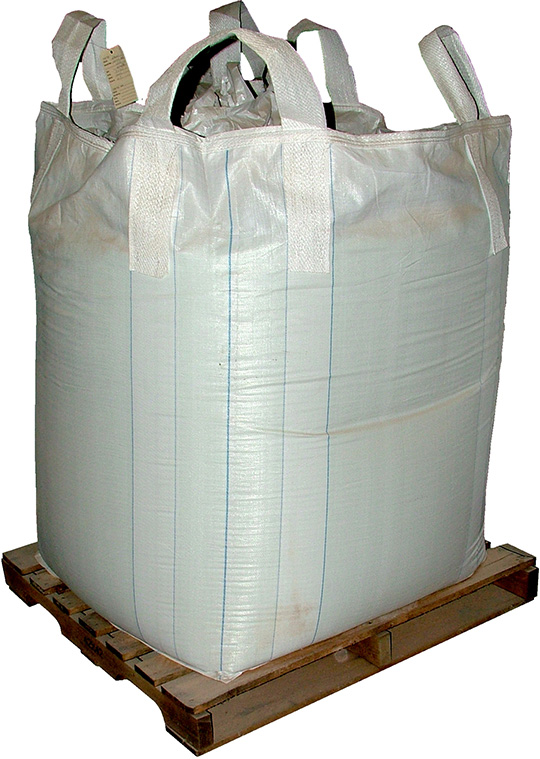
- Product Page Grid Blurb: Suståne 3-7-4 is a granulated organic fertilizer that is rich in organic phosphorus and provides all of the soil building qualities of a concentrated compost.
- Product Grade:
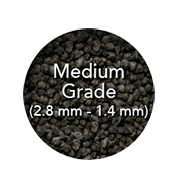

 |
||||
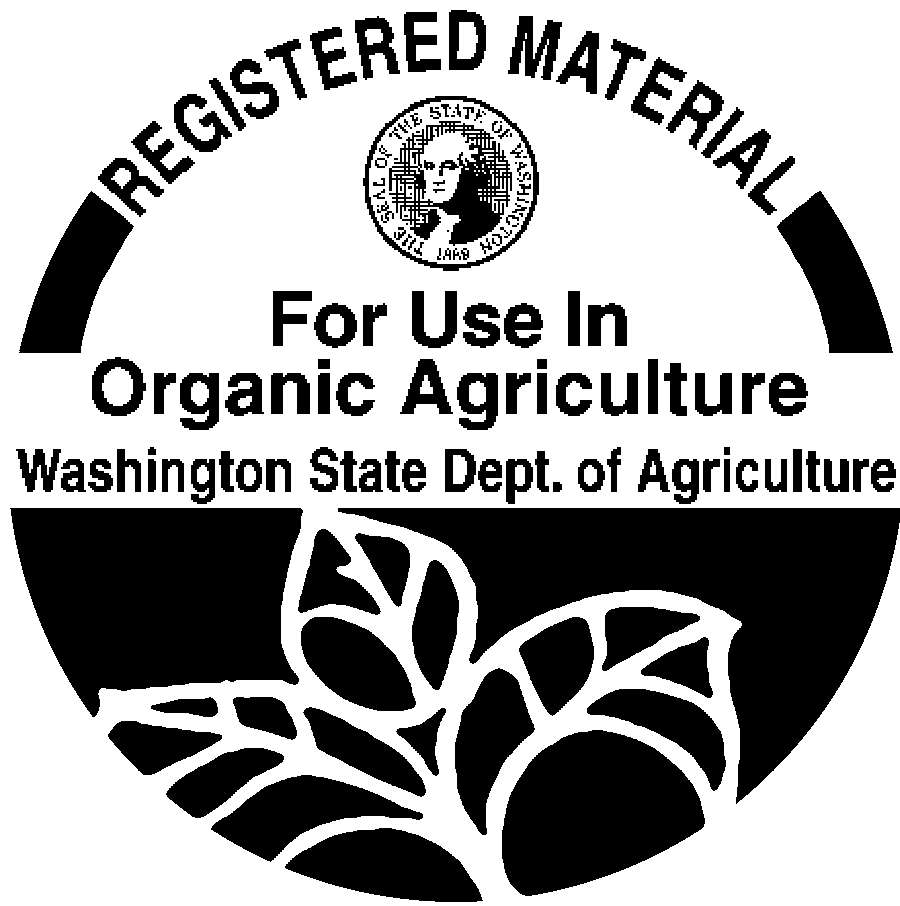 |
||||
|
Suståne 3-7-4 is a granulated organic fertilizer that is rich in organic phosphorus and provides all of the soil building qualities of a concentrated compost.
Rapid vegetative establishment for organic erosion control, highway roadside, wetlands and burn, mine site reclamation, and oil/gas site remediation and agriculture.
Description
Suståne 3-7-4 Natural Organic is a granulated organic fertilizer made from nutrient-rich, concentrated compost. Suståne replenishes the soil with a rich supply of humus (stabilized organic matter) and all of the essential nutrients required for quality growth. Suståne 3-7-4 provides a concentrated package of plant macro and micronutrients and organic substances and beneficial microbiology derived from biologically stable compost.
Recommended Use:
For use in the production of certified organic crops, as a general soil builder, crop starter fertilizer, organic phosphorus source, erosion control, and remediation. In-row or broadcast, quick ground cover minimizes soil erosion and gets crops off to a fast start. Ideal for reclamation, revegetation and building of disturbed or depleted soils, native plant establishment, construction site vegetation, beach restoration, burn area reestablishment, and mine site reclamation.
Benefits of Suståne 3-7-4
- An excellent source of phosphorus provides a rapid start to crops.
- It can be applied in row, direct with seed.
- Contains all primary, secondary and tertiary nutrients for plant growth.
- Supplies soil with 55% Organic Matter in the form of stabilized humus.
- Carbon: Nitrogen Ratio (8:1) ensures no N immobilization in soil.
- Increases the nutrient and water holding capacity of the soil.
- Enhances the soil’s ability to suppress plant pathogens.
- Improves soil structure, porosity, and stability leading to greater root development, infiltration, and soil micropores.
Always Safe for Plants, People, and the Environment
- Manufactured by Suståne in the USA at an EPA permitted facility.
- Pathogen and weed/seed-free, no sewage sludge, blood or meat products or pharmaceutical byproducts.
- The only organic allowed for export to over 60 countries worldwide.
- USDA NOP, COR, EU, and JAS organic compliant.
- Aerobic composting eliminates animal and rodent attraction to the application site.
- Suståne will not attract flies or other insects.
- Suståne is fully composted - not sterilized; enhancing the soil environment for beneficial microbial populations.
- It improves and sustains soil health.
Application Rates and Methods:
Crop Establishment Apply direct in-row with the seed at rates of 100 lb. up to 250 lb. per acre.
Broadcast Application Rates:
- For 30 lb. of N per acre apply 1,000 lb.
- For 50 lb. of N per acre apply 1,667 lb.
- For 70 lb. of N per acre apply 2,333 lb.
For 70 lb. of N per acre apply 2,333 lb.
- Fall application, post-harvest. Broadcast apply followed by light incorporation.
- Spring application, pre-plant. Broadcast apply followed by light incorporation.
- During planting, it can be applied by grain drills, banded, or air seeders, direct with seed.
- During cultivation, apply next to row or use Suståne 8-2-4 for higher N demanding crops.
Land Management, Native Restoration & Erosion Control Programs:
Hydroseeding
- For 44 lb. of N per acre apply 1467 lb.
- For 90 lb. of N per acre apply 3000 lb.
- For 130 lb. of N per acre apply 4333 lb.
Soil Preparation
- Light, High Sandy Soil:10 lb. per 100 ft2 of bed
- Medium, Clay Loam Soil: 15 lb. per 100 ft2 of bed
- Heavy, Silty, Clay Loam: 20 lb. per 100 ft2 of bed
(*Hydroseeding: Mix with water solution at a ratio of 4 lb. Suståne 3-7-4 to 1 gallon of water or 2 tons per 1,000-gallon tank)
Guaranteed Analysis
| Total Nitrogen (N) | 3% |
| 0.3% Ammoniacal Nitrogen | |
| 0.3% Water Soluble Organic Nitrogen | |
| .4% Water Insoluble Organic Nitrogen* | |
| Available Phosphate (P2O5) | 7% |
| Soluble Potash (K2O) | 4% |
| Calcium (Ca) | 6.00% |
| Magnesium | 1.00% |
| Sulfur | 1.00% |
Total Plant Nutrition
| Iron | 0.50% |
| Manganese | 0.05% |
| Zinc | 0.05% |
| Humic Acid | 5.3% |
| Organic Matter | 55% |
| pH | 7.0 |
| Carbon:Nitrogen (C:N) | 8:1 |
| Bulk Density lb./cu. ft | 38 |
| % of Total N as Slow Release | 80% |
Derived from aerobically composted turkey litter.
*2.4% slowly available nitrogen from aerobically composted turkey litter.
Available particle sizes:
- Medium Grade, 200 SGN (2.8 mm - 1.4 mm)
Coverage:
- 33 lb. covers 1,000 ft2 @ 1 lb. N per 1,000 ft2 (44 lb. N per acre)
- 16.1 kg covers 100 m2 @ 0.5 kg N per 100 m2 (50 kg N per hectare)
Rates:
- Apply 33 lb. per 1000 ft2
- Apply 161 g per 1 m2

- Product Page Grid Blurb: The classic Suståne formulation. Used in organic agriculture since 1988.
- Product Grade:
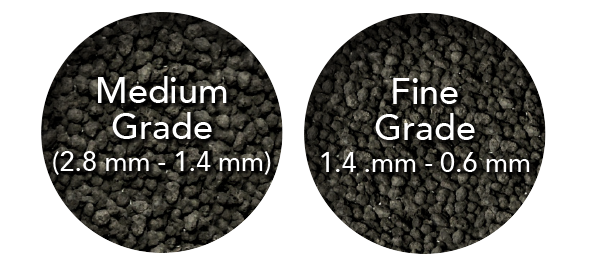

 |
|||||
|
|||||
|
Suståne 5-2-4 is a natural organic slow-release nitrogen fertilizer that provides a high amount of organic nitrogen for lasting plant nutrition.
Description:
Suståne 5-2-4 All Natural Slow Release Nitrogen Fertilizer promotes a rapid rate of vegetative establishment. Quick ground cover minimizes soil erosion and the need for repairs or re-seeding. Suståne 5-2-4 All Natural provides 6 - 12 weeks of nitrogen in the organic slow-release form and replenishes the soil with a rich supply of humus (stabilized organic matter) and all of the essential nutrients required for quality growth. Suståne 5-2-4 All Natural provides a combination of plant nutrients and organic substances derived from biologically stable compost plus natural sulfate of potash and feather meal.
Recommended Use:
Certified organic, rapid vegetative establishment, erosion control, wetlands and watershed areas, native plant areas, dune and beach restoration, burn area reestablishment, mine site reclamation, oil/gas/coal right of ways and pipelines, highway roadside establishment, protected natural areas, forests, parks, and landscapes.
Stabilized Organic Matter
Suståne 5-2-4 All Natural Slow Release Fertilizer was designed with the knowledge that the best way to grow quality plants is to develop and maintain healthy soil. While synthetic fertilizers supply plant growth nutrients, they do not supply the humic substances and organic matter required to maintain quality growth. Using fully composted natural fertilizers increases the levels of beneficial microbial activity, which in turn converts nutrients into plant-available forms.
Benefits of Suståne 5-2-4
- Rich in humic acids - 8.5%
- Increases the nutrient and water holding capacity of the soil
- Strengthens plants tolerance against hot dry conditions
- Promotes greater root development
- Improves buffering against changes in soil pH
- Increases the soil’s ability to suppress plant pathogens
- Increases soil porosity and stability for greater root development and water holding capacity
Always Safe for Plants, People, and the Environment
- Manufactured by Suståne in the USA at an EPA permitted facility.
- Pathogen and weed-free, no blood or bone products. Allowed for export to over 60 countries worldwide.
- Aerobic composting eliminates animal and rodent attraction to the application site.
- Contains naturally occurring beneficial bacteria and fungi that are necessary to begin the nutrient life cycle in poor soil.
- Suståne is fully composted eliminating the need for sterilization, permitting a healthy environment for beneficial microbial populations.
Suståne Integrated Soil Management Program:
Land Management, Native Restoration & Erosion Control Programs:
Hydroseeding
- For 44 lb. of N per acre apply 880 lb.
- For 90 lb. of N per acre apply 1800 lb.
- For 130 lb. of N per acre apply 2600 lb.
Soil Preparation
- Light, High Sandy Soil: 20 lb. per 100 ft2 of bed
- Medium, Clay Loam Soil: 15 lb. per 100 ft2 of bed
- Heavy, Silty, Clay Loam: 10 lb. per 100 ft2 of bed
(Hydroseeding: Mix with water solution at a ratio of 4 lb. Suståne 5-2-4 to 1 gallon of water or 2 tons per 1,000-gallon tank)
Turf Establishment, Seeding, New Lawn Construction Laying Sod, and Sprigging:
Suståne 5-2-4 is a complete package fertilizer containing Slow Release Nitrogen, chelated micronutrients, organic phosphorous, and humic substances. Suståne 5-2-4 has been demonstrated time and again to surpass synthetic turf starter fertilizers and other sources of humates and plant biostimulants.
Preplant - Broadcast and Incorporate into the top 4 in. (10 cm) of soil
- 40 lb. per 1,000 ft2 or 1,750 lb. per acre
- 20 kg per 100 m2 or 2,000 kg per hectare
Post plant (45-60 days) - Broadcast and water in
- 20 lb. per 1,000 ft2 or 880 lb. per acre
- 10 kg per 100 m2 or 1,000 kg per hectare
Turfgrass & Landscape Maintenance:
Professional landscapers have increasingly turned to Suståne 5-2-4 for use on high-maintenance turf and landscaped environments. While synthetic fertilizers supply plant growth nutrients, they do not supply the organic matter required to maintain quality growth. Using fully composted natural fertilizers increases the levels of beneficial microbial activity, which in turn converts nutrients into plant-available forms.
Warm Season Turf
- Athletic Fields, Parks and Lawncare
- Apply 4-7 times per season
- Spring and Fall - 20 lb. per 1,000 ft2
- Summer - 16 lb. per 1,000 ft2
Cool Season Turf
- Athletic Fields, Parks and Lawncare
- Apply 2-3 times per season
- 20 lbs. per 1,000 ft2
Soil Preparation For Flower & Shrub Beds
- Light, Sandy Soil: 20 lb. per 100 ft2
- Medium, Clay Loam Soil: 15 lb. ft2
- Heavy, Silty, Clay Loam: 10 lb. per 100 ft2
Incorporating into Potting Soil Mixes and other Container Substrates:
Sustane 5-2-4 provides a constant release of nutrients when used with container substrates with an average temperature of 70oF / 21oC. When determining application rates consider all cultural practices including irrigation, container substrate physical characteristics, and growing environment.
Container Mix Application Rates:
| Container Mix Rates by Volume | |||||
|---|---|---|---|---|---|
| lb. per cubic yard | kg per cubic meter | ||||
| Low | Med | High | Low | Med | High |
| 8.8 | 16 | 24 | 5.3 | 9.4 | 14.2 |
Low Rate: Recommended for use on salt-sensitive species; when concurrent with liquid feed; with production systems utilizing low leaching fractions (less than 10%); and when applied to heavy potting substrates (total porosity less than 65%).
Medium Rate: Recommended for use on medium feeding species; on most nursery stock and foliage plants; and when liquid feed is not performed concurrently.
High Rate: Recommended for use on heavy feeding species; with production systems utilizing high leaching fractions (greater than 20%); and when applied to light, porous substrates (total porosity greater than 80%).
Bulk Density of Suståne 5-2-4:
| Rounded Measure (Volume) | Grams (weight) | ||||
|---|---|---|---|---|---|
| Teaspoon (tsp) | Tablespoon (Tbs) | 1 oz | 1/4 cup | 1/2 cup | 1 cup |
| 2.8 | 8.5 | 17 | 34 | 68 | 136 |
Container Topdressing Application Rates in Grams:
| Container Size | |||||||||
|---|---|---|---|---|---|---|---|---|---|
| Rate | 5" Std. | 6" Std. | 1 gallon | 2 gallon | 3 gallon | 5 gallon | 7 gallon | 10 gallon | 15 gallon |
| Low | 5 | 10 | 11 | 24 | 45 | 72 | 101 | 123 | 131 |
| Med | 11 | 21 | 30 | 55 | 107 | 173 | 384 | 298 | 320 |
| High | 16 | 29 | 45 | 94 | 166 | 264 | 380 | 456 | 490 |
- These rates are intended as guidelines. Suståne encourages a trial prior to changing any fertilizer program.
- Do not steam sterilize container mix after fertilizer has been incorporated.
- Do not store container mix more than two weeks after incorporating fertilizer. Plant material can be damaged from salt accumulation.
- Monitor electrical conductivity (EC) of container substrate throughout the production cycle.
- If the mix is stored longer than two weeks, leaching container mix may be required to remove accumulated salts.
- Adjust application rate as needed.
Guaranteed Analysis
| Total Nitrogen (N) | 5% |
| 0.5% Ammoniacal Nitrogen | |
| 0.5% Water Soluble Organic Nitrogen | |
| 4.0% Water Insoluble Organic Nitrogen* | |
| Available Phosphate (P2O5) | 2% |
| Soluble Potash (K2O) | 4% |
| Calcium (Ca) | 3.00% |
Total Plant Nutrition
| Iron | 0.50% |
| Manganese | 0.05% |
| Zinc | 0.05% |
| Humic Acid | 8.5% |
| Organic Matter | 65% |
| pH | 6.8 |
| Carbon: Nitrogen (C: N) | 4:1 |
| Bulk Density lb./cu. ft | 38 |
| % of Total N as Slow Release | 90% |
Derived from aerobically composted turkey litter, feather meal, and sulfate of potash.
*4.0% slowly available nitrogen from aerobically composted turkey litter and feather meal
Available Particle Sizes:
- Medium Grade, 200 SGN (2.8 mm - 1.4 mm)
- Fine Grade, 100 SGN (1.4 mm - 0.6 mm)
Coverage:
- 50 lb. covers 2500 ft2 @ 1 lb. N per 1000 ft2 (44 lb. N per acre)
- 22.67 kg covers 100 m2 @ 0.5 kg N per 100 m2 (50 kg N per hectare)
Rates:
- Apply 20 lb. per 1000 ft2
- Apply 100 g per 1 m2
Page 1 of 2

